Nellie Huang is a professional travel writer and author based in San Miguel de Allende with her family. She has contributed to BBC Travel, CNN, International Business Times, and National Geographic, and co-authored Lonely Planet’s 2025 Mexico guide. Read about her adventures worldwide on wildjunket.com and follow her updates on Instagram @wildjunket.
Ways to Travel
Arunachal Pradesh Crowned Best Adventure Tourism Destination at IITM 2025: A Spotlight on Sustainable Eco-Tourism and Rich Cultural Heritage
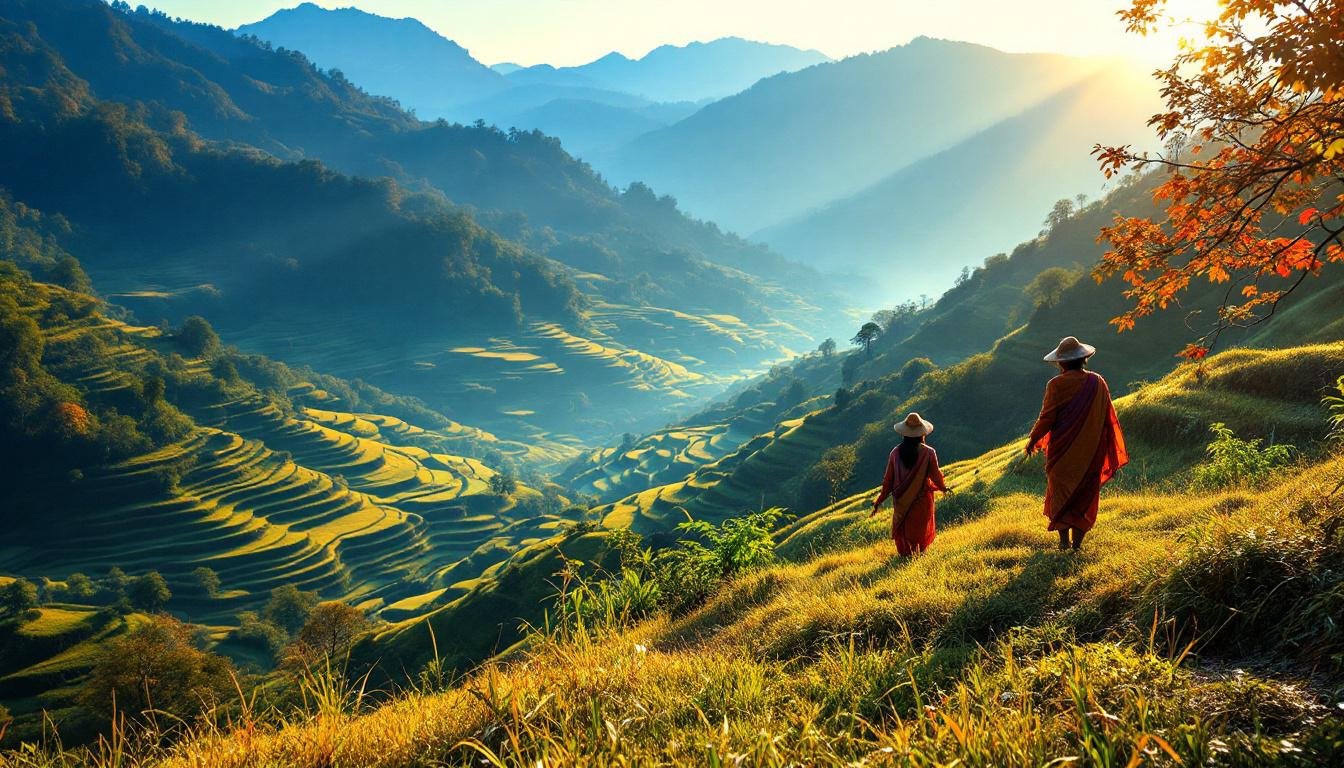
Sunday, July 27, 2025
Arunachal Pradesh, the northeastern gem of India, has been awarded the prestigious Best Adventure Tourism Destination title at the India International Travel Mart (IITM) 2025, held in Bengaluru. This recognition highlights the state’s burgeoning reputation as a leading hub for adventure tourism, with an emphasis on eco-tourism and cultural immersion. With its lush landscapes, snow-capped mountains, and pristine rivers, Arunachal Pradesh offers the perfect mix of adventure and cultural tourism, making it a top choice for thrill-seekers and nature lovers alike.
The award comes as a testament to the state’s commitment to sustainable tourism practices. By prioritizing environmental conservation while promoting authentic travel experiences, Arunachal Pradesh has set a benchmark for eco-friendly tourism. The increasing popularity of adventure tourism in the state aligns with growing global trends favoring responsible travel and immersive cultural experiences. As more visitors flock to explore its natural beauty, Arunachal Pradesh continues to shine as an emerging leader in India’s tourism sector.
Key Highlights:
- Arunachal Pradesh wins Best Adventure Tourism Destination Award at IITM 2025.
- Known for its lush green landscapes, snow-capped mountains, and pristine rivers.
- Emphasizes sustainability, cultural immersion, and eco-friendly tourism.
- Recognized for its growing influence in the Indian tourism industry.
- The award underscores the state’s commitment to environmental protection.
Arunachal Pradesh’s Rise as an Adventure Tourism Leader
Arunachal Pradesh, often referred to as the “Land of the Rising Sun,” has become a beacon for adventure tourism in India. The state’s scenic landscapes, coupled with its rich cultural heritage, provide an ideal setting for both eco-tourism and adventure activities. Arunachal Pradesh is home to some of the most stunning natural sites in India, including lush green forests, snow-capped peaks, and gushing rivers, all of which contribute to its status as a prime adventure destination.
The state’s success in the adventure tourism sector can be attributed to several factors. First and foremost is the growing emphasis on sustainability. Arunachal Pradesh has been at the forefront of promoting eco-tourism, ensuring that adventure activities are conducted responsibly without causing harm to the environment. The commitment to preserving its natural resources while offering unforgettable experiences has garnered international attention and acclaim.
Local communities play a crucial role in promoting sustainable tourism. By involving locals in the tourism process, the state ensures that the benefits of tourism are shared equitably, helping to boost the local economy while fostering a deeper connection to nature. These efforts have contributed to the state’s recognition as a top adventure tourism destination at IITM 2025.
Eco-Tourism: Arunachal Pradesh’s Green Tourism Model
A key component of Arunachal Pradesh’s adventure tourism strategy is its dedication to eco-tourism. The state has established a variety of eco-friendly initiatives aimed at conserving its unique flora and fauna while providing tourists with sustainable travel experiences. Visitors can engage in activities like trekking, river rafting, and camping, all while learning about the state’s ecological conservation efforts.
The state’s pristine forests, which are home to a diverse range of wildlife species, including the rare and endangered red panda, offer a rich environment for eco-tourism. Several protected areas, including wildlife sanctuaries and national parks, allow tourists to explore the natural beauty of the region while respecting its delicate ecosystems.
Arunachal Pradesh’s green tourism model not only focuses on environmental conservation but also emphasizes cultural preservation. Indigenous communities in the region maintain strong connections to their ancestral lands and traditions. By promoting cultural immersion alongside adventure activities, the state provides visitors with an authentic travel experience that is both enriching and educational.
Adventure Activities in Arunachal Pradesh: A Thrill-Seeker’s Paradise
Arunachal Pradesh’s diverse topography makes it a haven for adventure sports enthusiasts. The state’s rugged mountains, deep valleys, and fast-flowing rivers create an ideal environment for outdoor activities such as trekking, rafting, mountaineering, and rock climbing. Popular adventure destinations within the state include Tawang, Ziro, and Pasighat, each offering a unique experience for thrill-seekers.
- Trekking – Arunachal Pradesh is home to some of India’s most challenging trekking routes, including the high-altitude treks of Tawang and the stunning trails of the Eastern Himalayas. Trekkers can explore dense forests, alpine meadows, and beautiful lakes while immersing themselves in the region’s breathtaking natural beauty.
- River Rafting – The state’s rivers, such as the Siang and Lohit, offer exhilarating opportunities for white-water rafting. These rivers, which originate from the Tibetan plateau, provide a thrilling rafting experience against the backdrop of towering mountains and dense forests.
- Mountaineering – The mighty peaks of Arunachal Pradesh, including Kangto, Nyegi Kangsang, and Gorichen, offer mountaineering challenges for experienced climbers. The remote location of these peaks adds to the adventure, making it a coveted destination for those looking to test their skills.
- Rock Climbing and Camping – For those who prefer more land-based adventure, rock climbing and camping are popular activities in the state. The rugged terrain offers numerous climbing spots, while the region’s tranquil forests and rivers provide perfect locations for camping.
Cultural Immersion: A Journey into Arunachal Pradesh’s Traditions
In addition to its adventure offerings, Arunachal Pradesh also provides a rich cultural experience for visitors. The state’s indigenous tribes, including the Apatani, Monpa, and Nyishi, offer a unique insight into traditional life in the northeastern region of India. Travelers can engage in cultural exchange programs, where they learn about the customs, festivals, and rituals of these communities.
The state’s festivals, such as the Solung festival of the Adis and the Losar festival of the Monpas, are an essential part of Arunachal Pradesh’s cultural tourism appeal. These festivals, filled with colorful dances, traditional music, and feasts, offer a glimpse into the local traditions and way of life.
By embracing both adventure and cultural tourism, Arunachal Pradesh has successfully positioned itself as a destination that offers much more than just a thrill-seeker’s paradise. It has become a place where tourists can connect with nature while also gaining a deeper understanding of the state’s rich cultural heritage.
Sustainability and Future Prospects
As Arunachal Pradesh continues to gain recognition on the global tourism map, sustainability remains at the core of its tourism strategy. The state’s approach to eco-tourism, with a focus on preserving its pristine environment, offers a blueprint for other destinations in India and beyond. By promoting responsible tourism and involving local communities, Arunachal Pradesh is setting a standard for sustainable adventure tourism.
Looking to the future, Arunachal Pradesh is poised to become one of India’s top adventure tourism destinations. With its vast untapped potential, the state is attracting not only adventure enthusiasts but also eco-tourism advocates and cultural travelers. The growing interest in sustainable tourism, combined with the state’s natural beauty and rich heritage, makes it a prime destination for future visitors.
Conclusion: A Rising Star in India’s Adventure Tourism Scene
The Best Adventure Tourism Destination Award at IITM 2025 is a well-deserved recognition for Arunachal Pradesh’s continued efforts in promoting eco-tourism, adventure, and cultural immersion. With its commitment to sustainability and its abundance of natural and cultural treasures, the state is poised to become a global leader in adventure tourism. Whether it’s trekking through the Eastern Himalayas, rafting on its mighty rivers, or immersing oneself in the traditions of its indigenous tribes, Arunachal Pradesh offers an unforgettable experience for all types of travelers.
Key Takeaways:
- Arunachal Pradesh awarded Best Adventure Tourism Destination at IITM 2025.
- Focus on sustainable tourism and eco-friendly practices.
- Adventure activities such as trekking, rafting, and mountaineering attract thrill-seekers.
- Rich cultural immersion through tribal traditions and festivals.
- Arunachal Pradesh’s growing influence in the global tourism industry.
As Arunachal Pradesh’s tourism sector continues to evolve, its emphasis on sustainability and authenticity promises to ensure that future visitors will experience the state’s true essence. With its natural beauty, adventure offerings, and cultural richness, the state is set to become a must-visit destination for eco-tourists and adventure seekers worldwide.
Ways to Travel
Mexico’s best outdoor adventure travel
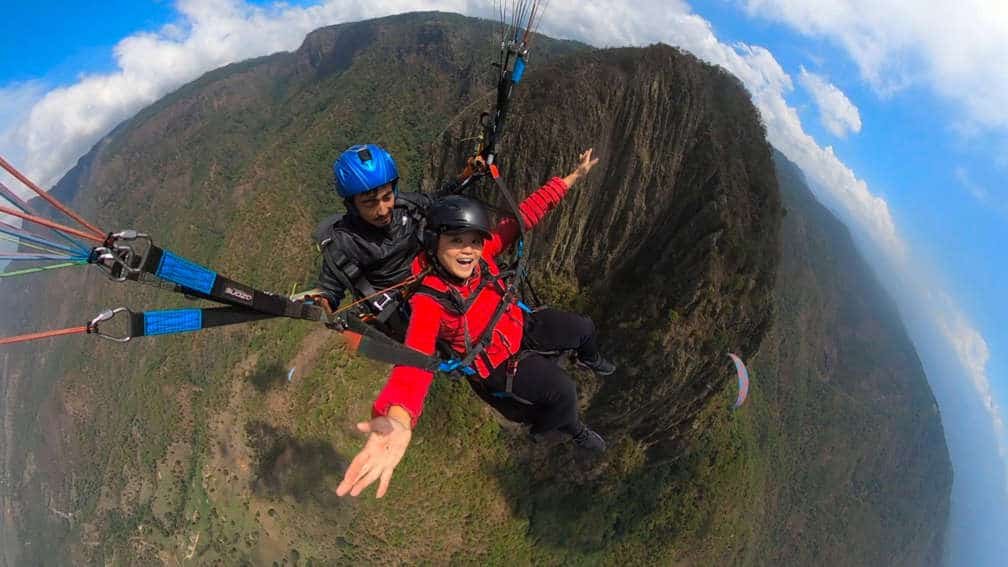
The wind whips across my face as the paraglider whisks me high into the air. My feet, which were just running frantically off the edge of a mountain, now dangle 1,000 feet above ground. The town of Valle de Bravo sprawls into the distance — a patchwork of green fields blanketing the wooded mountains, punctuated by the deep-blue lake.
This is the Mexico I fell in love with. My real passion for this country wasn’t born on a beach in Cancún but in moments just like this: moments of breathless wonder, of heart-pounding thrill. It’s a feeling I’ve chased across the country, from the rugged slopes of Chihuahua’s Copper Canyon to the waterfall-studded region of Huasteca Potosina to the sultry jungles of Chiapas.
Mexico, teeming with life, is one of the world’s few megadiverse nations. Over 90 million hectares — an area larger than the United Kingdom and France combined — are designated natural protected areas. There is so much to explore beyond the busy coastlines and tourist-popular spots.
In this edition of the Where to Travel in Mexico 2025 series, we venture into the untamed and explore six of Mexico’s best spots for outdoor adventurers. Pack your boots, and get ready to head into the wild!
Valle de Bravo: For mountain bikers and paragliders
This lakeside town, snuggled in pine-forested mountains two hours south of Mexico City, is far more than just a pretty Pueblo Mágico. Its unique geography creates reliable thermals, making it a bucket-list destination for paragliders and hang gliders. As the owner of Flumen Paragliding School shares with me, it’s one of the few places on Earth where it’s possible to fly all year round, thanks to the perfect weather conditions.
Tandem paragliding, where you’re strapped to a professional pilot, requires no experience or specific fitness level. My 10-year-old daughter tried paragliding for the very first time in Valle de Bravo and could not get enough of it. Marko, her pilot, kept her safe, gave her clear instructions and made her feel confident throughout the flight. Upon landing, the first thing she said was, “Again! Again! I want to do it again!”
But Valle’s appeal isn’t just in the sky. The surrounding mountains are crisscrossed with world-class mountain biking trails. Living for Bikes rents out high-quality bikes and has a bike park where you can practice technical descents and jumps. Lake Avándaro itself is a playground for sailing, water skiing and stand-up paddleboarding. The calm and peaceful waters, together with the warm air that blows in from the coast of Michoacán, bring in excellent gusts for sailing.
Huasteca Potosina: For waterfall chasers
The Huasteca Potosina is a natural playground for those who love splashing around dreamy cascades and swimming in jade green natural pools. This region in the state of San Luis Potosí is a crumpled landscape of limestone karsts carved by impossibly turquoise rivers. The result is a wonderland of hundreds of waterfalls, caves and crystalline pools perfect for a high-octane itinerary.
Prepare to get wet and your heart pumping! A typical week involves white-water rafting on the Class III rapids of the Tampaón River, rappelling down the 167-foot Minas Viejas waterfall and cliff-jumping into the cerulean pools at Puente de Dios. To tone it down a notch, you can hop on a boat to get up close to Cascada Tamul — it does not flow year round; be sure to check before booking — or go ziplining and skybiking over the Cascada Micos.
Those with kids can also spend a frolicking good time at the family-friendly Cascada Tamasopo, complete with Tarzan swings and jumping boards. Just avoid visiting during the Mexican holidays, and you should have the waterfalls all to yourself.
El Potrero Chico: For rock climbers
Just a two-hour drive from the metropolis of Monterrey, the earth splits open to reveal a canyon of sheer, towering limestone walls. This is El Potrero Chico, Mexico’s rock climbing paradise. The dramatic, spired peaks and seemingly endless rock faces attract climbers from across the globe. In fact, a climber friend who travels the world for the best rock calls Potrero Chico one of her favorites — so much so that she makes a point to return for a climbing trip every year.
What makes El Potrero Chico special is the incredible concentration of high-quality climbing. There are over 600 bolted routes, from beginner-friendly slabs to legendary, 23-pitch multi-day ascents that take you thousands of feet off the canyon floor. The limestone here is known for its grippy, textured surface filled with natural pockets that create an intuitive style of vertical face climbing, making it perfect for beginners.
Campsites like La Posada offer gear rentals and instruction, making a day on these famous walls achievable for almost anyone. Seasoned climbers often arrive with just a rope and harness. Once you arrive, everything you need — food, lodging and the climbs themselves — is within walking distance. Spend your days on the wall and evenings sharing stories with fellow adventurers; you’ll feel like a part of the climbing community within days.
Copper Canyon: For the back country hiker
Sprawling across the northern state of Chihuahua, the Copper Canyon is a network of six interconnected canyons that are deeper — and in parts wider — than the Grand Canyon. This is the ancestral home of the Rarámuri (Tarahumara) people, best known for their legendary long-distance running abilities. I saw this firsthand when I met Rarámuri guide Lorenzo, one of the incredible athletes who has tackled the annual 80-kilometer Caballo Blanco ultramarathon, a grueling race that snakes up and down the canyon’s steep trails.
The best way to get around Copper Canyon is on board the El Chepe train, a scenic rail journey that weaves through rural towns and the imposing mountains, even teetering on the canyon rim in some parts. The rail line itself is an engineering marvel, stretching over 656 km of track and 37 bridges, it took over 60 years to build. While the train offers spectacular views, the real magic happens when you get off and hike into the canyon’s depths.
Base yourself in a town like Divisadero and arrange guided hikes from there. Spend a day at the nearby Parque de Aventura Barrancas del Cobre, home to one of the world’s longest ziplines. You can also do a multi-day hike down to the remote canyon-floor villages of Batopilas or Urique. The journey from the pine forests to the subtropical riverbeds will help you gain a profound appreciation for the Rarámuri’s connection to this landscape.
Loreto: For sea kayakers and divers
For underwater adventurers, the Baja California Peninsula is a superhighway for magnificent marine animals such as the whale shark and mobula ray. Here, the deep blue of the Pacific meets the rich waters of the Gulf of California, creating a theater for some profound wildlife encounters. It’s for good reason that world-famous oceanographer Jacques Cousteau named this “the world’s aquarium.”
The heart of Baja’s marine adventures lies in Loreto, a tranquil town and gateway to Bahía de Loreto National Park. Its calm, protected waters and chain of uninhabited islands make it a top-notch sea kayaking and scuba diving destination. If you’re looking to challenge yourself, sign up for the multi-day kayaking expedition, paddling from Isla Danzante to Isla Carmen. You’ll spend your nights camping under a star-dusted sky, miles from civilization, and your days gliding over crystalline waters, spotting dolphins, sea lions and, in winter, majestic blue whales.
Just two hours south of Loreto lies Magdalena Bay, an excellent spot to see gray whales from January to late March. From a small panga boat, my family had an incredible wildlife experience: a pair of curious mothers and their newborn calves approached our boat, close enough to be touched, lingering for almost 30 minutes. It was a transformative experience that truly connected us to these gentle giants. Note that these whale interactions are entirely whale-initiated and closely regulated to ensure no harm or stress is caused to the animals.
Pico de Orizaba: For hardcore mountaineers
Rising imposingly between the states of Veracruz and Puebla, Pico de Orizaba is Mexico’s highest peak and North America’s third highest. At a breathtaking 18,491 feet (5,636 meters), this dormant volcano offers a serious, non-technical mountaineering challenge that rewards climbers with unparalleled views stretching from the central highlands to the Gulf of Mexico.
But this is no casual day hike. Only experienced hikers with the right equipment and skills should attempt to climb this mountain, also known as Citlaltépetl. Summiting it is a two-day affair requiring proper acclimatization in a base town like Tlachichuca. It’s important to go with a reputable expedition company like 3Summits; they know the routes intimately and will manage the logistics and monitor for altitude sickness.
You’ll first start with a predawn alpine start, trekking up scree slopes before strapping on crampons and wielding ice axes to navigate the Jamapa Glacier. The final push to the crater rim is a grueling test of physical endurance and mental fortitude, but the prize — a 360-degree sunrise from the roof of Mexico — is a major achievement for any aspiring mountaineer.
What’s right for each type of traveler?
We’ve put together a table summarizing which destination would suit travelers based on their experience in Mexico.
Beginner travelers are those with limited international experience; maybe this is their first trip to Mexico. Ideal for first-timers who prefer margaritas with training wheels. These travelers stick to well-trodden paths, mastering “¿Dónde está el baño?” while clutching a phrasebook. They thrive in destinations where guacamole arrives with optional spice and the hotel staff speak Google Translate.
Intermediate travelers are those with some international experience who can handle moderate language barriers and cultural differences. Ready to trade resorts for real-deal experiences, these travelers navigate cobblestone streets without face-planting. They’ve graduated to ordering “tres tacos al pastor” without pointing and can haggle for a sombrero in Oaxaca’s markets… but still overpay by 20%.
Advanced travelers are those with extensive experience navigating complex destinations independently. These wanderers treat Mexico like a choose-your-own-adventure novel written in Spanglish. They’ve adopted a street dog named Churro, debate the merits of different artisanal mezcals and know which mercado stall has the best tamales oaxaqueños.
Ways to Travel
Historic UK landmark is transformed into a BEACH with splash pools, live DJs & 70m rides – and it's completely free – The Sun
Ways to Travel
Brits urged to learn vital beach safety tip as millions head on UK holidays
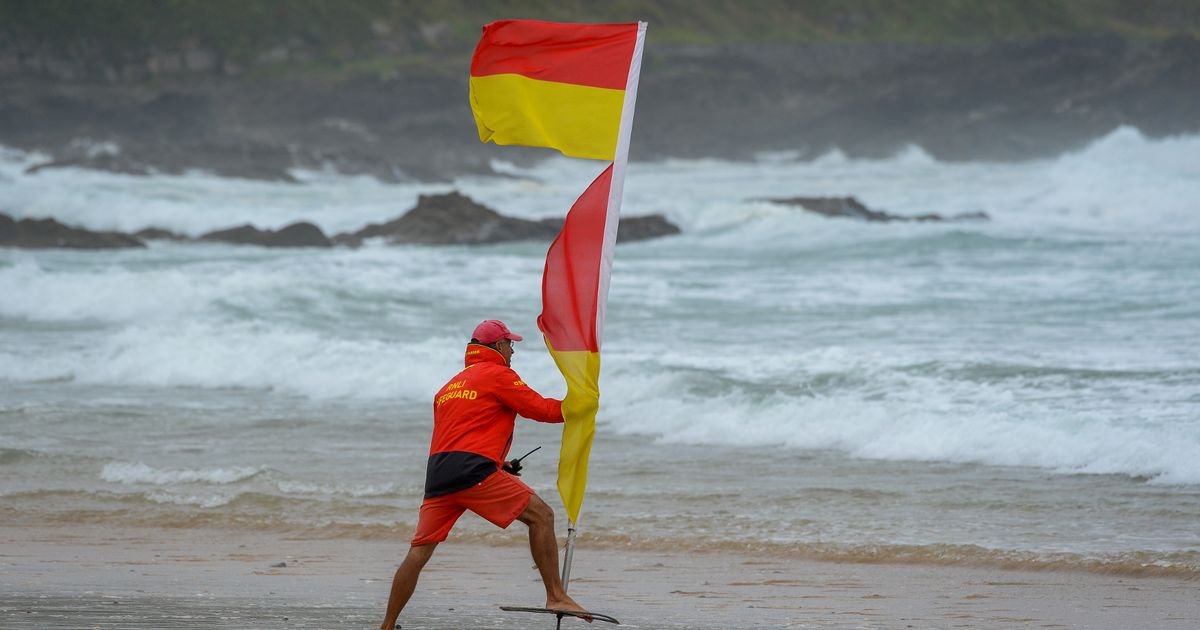
The RNLI reported a staggering 17,000 people were rescued on UK beaches last year which is why it’s important to know what coloured flags indicate on UK beaches
With more and more Brits opting to holiday in the UK with staycations being one of the biggest summer travel trends, it’s important to be clued up on beach safety. New research from Visit Britain found that over 1 in 3 (35%) UK adults plan to choose a domestic holiday trip, compared to just 28% choosing an overseas trip this summer.
But worryingly, recent RNLI figures show lifeguards responded to over 17,000 people last year on UK beaches, which could have been significantly less if beachgoers understood the flag system used to mark safe and unsafe zones.
READ MORE: Beautiful European seaside city named ‘Dubai dupe’ but with cheap £87 flights
In a effort to change this, caravan holiday provider Parkdean Resorts has detailed the differnce in flag colours and what they may mean to avoid any confusion or risking danger on the beach.
One red flag
The presence of a red flag on the beach signifies that the conditions are not safe for swimming. Do not enter the water as it’s too dangerous to swim, surf or even paddle.
Two red flags
This means that the beach can’t be used for any water use, so stay clear of the sea as there is a threat.
Orange flag
The presence of an orange windsock signifies strong wind conditions, so beachgoers should be cautious when swimming. Avoid using any inflatables as they could be blown out to sea.
Red and yellow flag
A red and yellow flag at the beach signifies that lifeguards are patrolling the area. The area between the flags is the safest area to swim, paddle and use water inflatables.
Black and white flag
A black and white chequered flag signifies that the area is designated for water sports, surfing, kayaking and paddle boarding. Swimmers should avoid this area and look for red and yellow flags instead.
Blue flag
Blue flags aren’t a safety flag colour but instead they signify excellent beach quality, including water cleanliness, safety provisions and environmental management. Britain has 76 blue flag beaches and wales has 21 – there are plenty of safe options for holidaymakers.
Some of these include:
- Trevone Bay, Cornwall – a picturesque sandy cove near Padstow.
- Whitley Bay, North Tyneside – stretching along the North East coast, it offers stunning views of St Mary’s Lighthouse and features a wide promenade, clean waters, and family-friendly facilities
- Sea Palling Beach, Norfolk – located near Great Yarmouth, it’s perfect for paddling, sunbathing and beachcombing
- Trecco Bay, Wales – this long sandy beach in Porthcawl is ideal for families with safe, clean waters and seasonal lifeguards
- Westward Ho!, Devon – famous for its expansive sands and excellent surfing conditions. The beach is backed by a natural pebble ridge and has superb accessibility
Do you have a story to share? Email niamh.kirk@reachplc.com
-

 Brand Stories6 days ago
Brand Stories6 days agoBloom Hotels: A Modern Vision of Hospitality Redefining Travel
-

 Brand Stories1 day ago
Brand Stories1 day agoCheQin.ai sets a new standard for hotel booking with its AI capabilities: empowering travellers to bargain, choose the best, and book with clarity.
-

 Destinations & Things To Do1 week ago
Destinations & Things To Do1 week agoUntouched Destinations: Stunning Hidden Gems You Must Visit
-

 AI in Travel1 week ago
AI in Travel1 week agoAI Travel Revolution: Must-Have Guide to the Best Experience
-

 Brand Stories3 weeks ago
Brand Stories3 weeks agoVoice AI Startup ElevenLabs Plans to Add Hubs Around the World
-

 Brand Stories2 weeks ago
Brand Stories2 weeks agoHow Elon Musk’s rogue Grok chatbot became a cautionary AI tale
-

 Destinations & Things To Do1 day ago
Destinations & Things To Do1 day agoThis Hidden Beach in India Glows at Night-But Only in One Secret Season
-

 Asia Travel Pulse3 weeks ago
Asia Travel Pulse3 weeks agoLooking For Adventure In Asia? Here Are 7 Epic Destinations You Need To Experience At Least Once – Zee News
-

 AI in Travel3 weeks ago
AI in Travel3 weeks ago‘Will AI take my job?’ A trip to a Beijing fortune-telling bar to see what lies ahead | China
-

 Brand Stories3 weeks ago
Brand Stories3 weeks agoChatGPT — the last of the great romantics

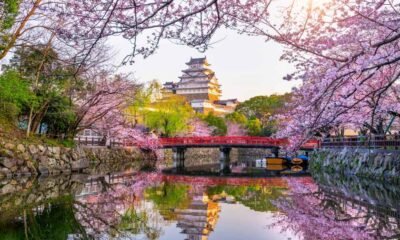

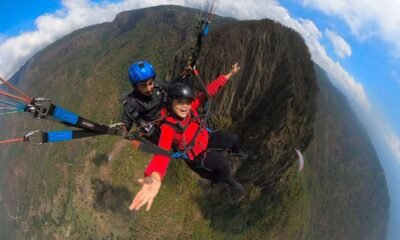

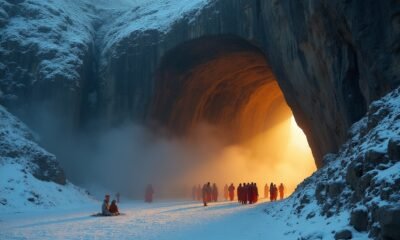

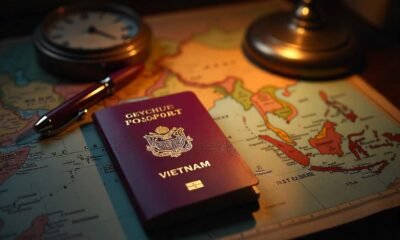





You must be logged in to post a comment Login